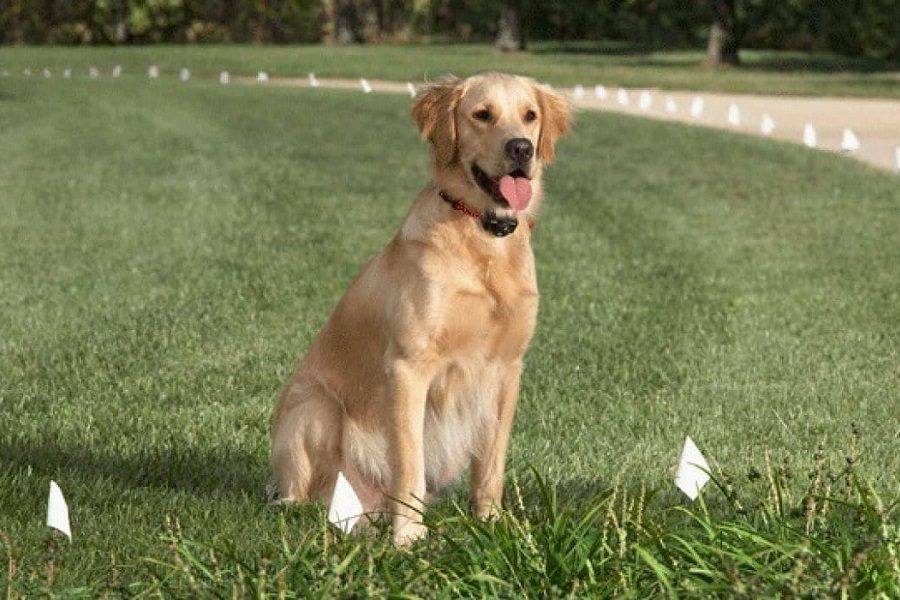Last Updated: 1 year ago
If you feel your dog has a crooked smile and can’t lift one side of its face, changing in facial expression, he may undergo the condition of facial nerve paralysis.
What is facial paralysis?

Facial paralysis in dogs is a condition that affects the facial nerve, which controls the movement of the muscles in the face. Common causes of dog facial paralysis are:
- Injury to the facial nerve
- Infection of the middle or inner ear
- Hypothyroidism
- Various tumors
The nerve dysfunction can appear on one side of the face (unilateral) or both sides of the face (bilateral). The seventh cranial nerve has various functions to control the muscles’ movement. The facial nerve attaches to the muscle and prevents the eyelids, nose, ear, lips, and cheeks
Cocker spaniels, beagles, corgis and boxers are more likely to be affected than other breeds in their mature age
Symptoms of facial paralysis in dogs
- Drooping of lips and ears
- Falling food from the side of the mouth
- Dribbling of saliva
- Extensive separation of the eyelids (upper and lower)
- Unable to blink
- The ooze of pus from the affected eye
- Decrease in tearing on one side
- One ear is held down as compared to the other one (unilateral).
- The nose’s deviation towards the unaffected side may not be symmetrical.
- Corneal ulceration may occur if the eye does not produce enough tears.
Types of facial paralysis in dogs
There are two types of facial nerve paralysis.
- The complete paralysis (severe dysfunction) in which facial muscles cannot move is very severe.
- A milder form of facial nerve paralysis (milder dysfunction) in which little movement of the eyelids, lips, cheeks, and ear is possible
Can Pets Recover From Facial Nerve Paralysis?
There are 30–50% chances of recovering your dog from facial paralysis. According to different studies, one-third of those diagnosed with facial paralysis have a complete recovery within three years.
The lubrication of the eye should continue if the muscle does not come back. Some conditions may be worse, and some are flexible and easy to treat. Let the veterinarian decide what is best for your pet.
How Do You Treat Facial Nerve Paralysis?
The treatment of your pet should be based on a diagnostic testing procedure. A physical examination of a dog is necessary to determine the affected muscle.
Symptomatic treatment is recommended in this regard. Each symptom needs a different treatment regimen. For example, the cornea may require a long period of lubrication and more care to avoid ulcers. Regular checkups and frequent treatment are needed for corneal ulcers.
A dog requires antibiotics if he is suffering from an ear infection, sometimes requires surgical intervention, and needs immunosuppressive medication in cases of meningitis.
The treatment is comfortable for idiopathic facial paralysis. MRI helps to evaluate the condition of inflammation (meningitis) and is paired with a spinal tap.
The tumor is also a cause of facial paralysis in dogs and can affect the middle ear and facial nerve. The otoscope is used to examine the middle ear. The use of special imaging, CT, and MRI permits diagnosis.
In cases of nose problems like crusting, dryness, and collapse of the nostrils, the facial nerve supports gland function in the nasal passages. To manage this condition, use a clean towel and hot water to cleanse the debris.
The thyroid gland deficiency (hypothyroidism) can cause facial paralysis, and this condition requires replacement therapy. Thyroid replacement therapy can solve the paralysis completely.
Electromyography helps to evaluate the severity of the injury. Any particular therapy is not available to treat injuries except electroacupuncture, applying heat to affected muscles, low-level light therapy, and massage. Sick dogs require soft food and water.
The regeneration of the facial nerve is slow, and the neurologist’s examination helps to determine recovery. If there is no improvement after six months, recovery chances are feeble.
Conclusion
Uncomplicated facial paralysis in dogs is not a life-threatening disorder; immediate testing and revealing the problem are necessary to save your pet from pain. If you see sudden symptoms of drooping in your dog, you must contact the vet.



